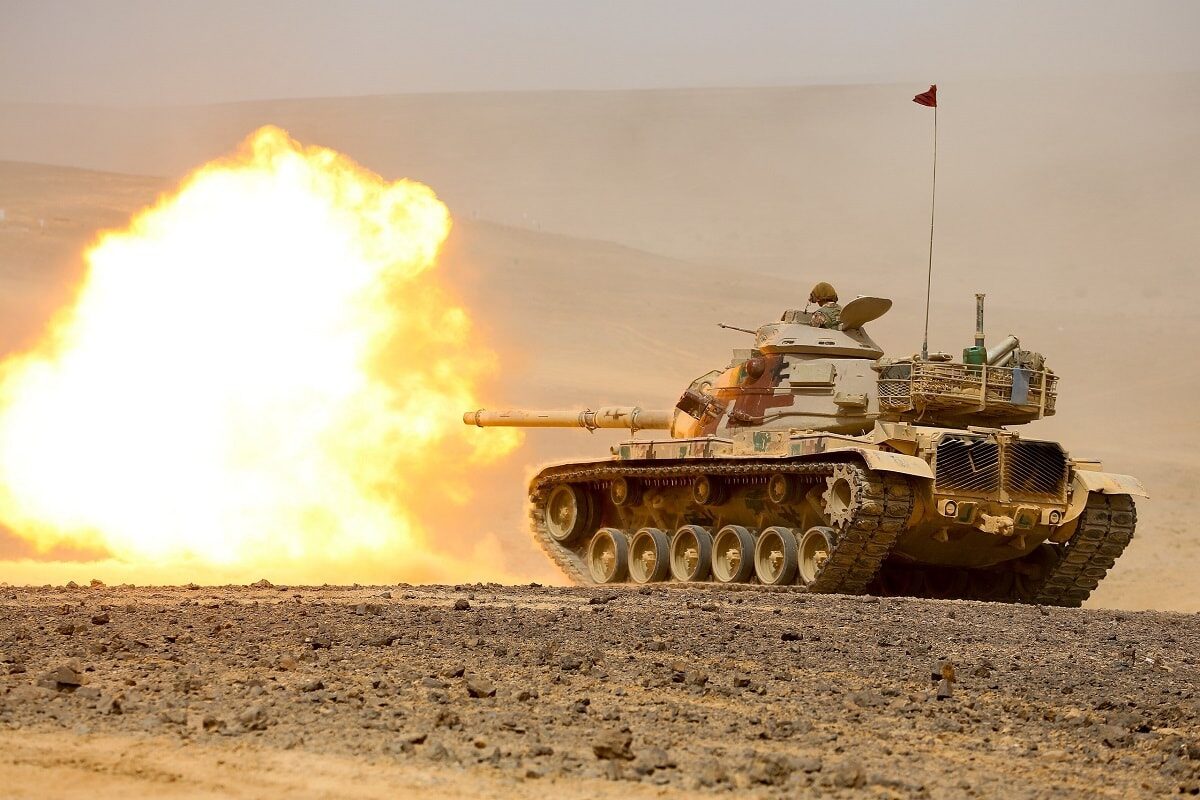In the early 1950s, Soviet tank design and production began surpassing its American rivals. The Americans, entrenched in the Korean War, refocused to close the “tank gap.” The result of U.S. efforts was the M60 Patton. However, the M60 Patton was created under urgent circumstances. Design and testing protocols were disregarded. So, the end product M60, which had not been properly tested, was a moderately flawed vehicle. Surprisingly for a tank that was not traditionally vetted, the M60 is now entering its sixth decade of service.
Rushed to Market But Delayed to Combat
The M60 would not see action until 1973 when Israeli soldiers rode the American-made tank into the Yom Kippur War. The tank would not make its American combat debut until the 1980s, during Operation Urgent Fury, when the hegemon U.S. invaded the microscopic island nation of Grenada. Grenadine forces failed to mount much of a resistance – and the M60 remained untested, functionally speaking, in American hands.
Not until Desert Storm would the already aging second-generation M60 Patton be put to proper use under the American banner. Desert Storm included some of warfare’s biggest-ever tank battles, including the Battle of Norfolk and the Battle of Medina Ridge. In use with the U.S. Marine Corps, the M60 performed admirably: destroying 100 enemy tanks while only losing one M60. However, by Desert Storm, the M60 had already been eclipsed; by the 1990s, the M1 Abrams was the primary tank of the U.S. forces. After the U.S. successfully pushed Saddam Hussein’s forces out of Kuwait, the M60 was retired from front-line service. The tank would serve with the National Guard until 1997 before being retired comprehensively, ending a four-decade stint as a workhorse of American tank units.
The M60 Patton Around the World
Although, the M60 Patton endures. A quarter-century after the Americans retired the Patton, 17 countries around the world still employ upgraded versions of the mid-century tank.
With a robust, hearty design – and the ability to take on upgrades seamlessly – the M60 has clung to relevancy. Remaining in service are two variants, the M60A1, and the M60A3. The two largest fleets of current M60s belong to Egypt and Turkey. Egypt operates over 1,000 M60s. Turkey operates a modified version of the M60A1, which they call the Sabra MK II. The upgraded Sabra includes a different gun (the IMI MG252), plus composite and explosive reactive armor modules on the turret and hull. Turkey hopes to continue improving upon its Sabra fleet – with the addition of laser-warning receivers, a retractable mast for area surveillance, and a remote-weapon station – pushing out the tank’s service life even further.
Turkey isn’t the only nation upgrading its M60s. Jordan is opting to keep its M60s in service, instead, it is retiring a newer tank, the British Challenger I. That the M60 is outlasting the Challenger, which is twenty-five years younger than the M60, is a testament to the M60’s longevity.
As 17 countries continue to upgrade their M60s, the tank’s upgrade market has boomed. Leonardo and Raytheon are now selling M60 upgrade kits to operator nations, such as Saudi Arabia, Greece, Thailand, and Taiwan. The upgrade packages are expected to double the tank’s service life. Some of the options available to M60 owners include engine improvements, additional armor, a digital fire-control system, or a 120 mm smoothbore main gun.
Of course, the M60 won’t be relevant forever; the upgrades are only a stop-gap, something poorer nations with second-rate militaries may find appealing to “get by” on.
Harrison Kass is the Senior Defense Editor at 19FortyFive. An attorney, pilot, guitarist, and minor pro hockey player, he joined the US Air Force as a Pilot Trainee but was medically discharged. Harrison has degrees from Lake Forest College, the University of Oregon, and New York University. He lives in Oregon and listens to Dokken. Follow him on Twitter @harrison_kass.

